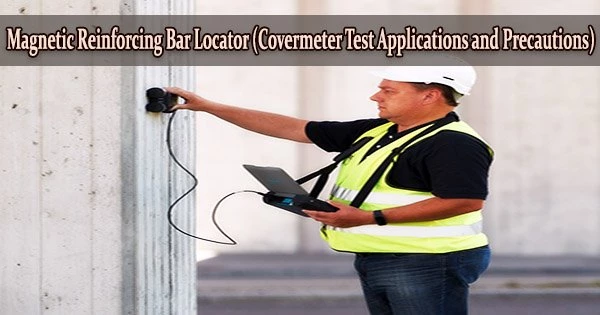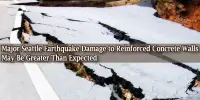The nondestructive Covermeter test is used to specify the placement of reinforcement bars in concrete and calculate the precise amount of concrete cover required. Due to the fact that many field applications directly or indirectly depend on knowledge of the placement of steel bars, concrete covers, and bar diameters, the magnetic rebar locator test is important in the construction industry.
For instance, understanding the spacing of bars and their placement in existing structures where drawings may not be available requires knowledge of the diameter of a bar and its location.
Identifying the locations of rebars also becomes crucial in situations where the core extracts of a concrete specimen need to be collected in order to prevent cutting the rebars. It is crucial to keep in mind that the cover meter test does not apply to all types of bars, including glass fiber and post or pretensioned strand.
Field Applications of Covermeter Test –
- Making drawings for old buildings for maintenance purposes
- On-site testing of reinforced structures.
- Drilling and core cutting
- Conformity check of new buildings
- Investigations on unknown structures
- Corrosion analysis
How does the Covermeter Test Device Work?
A covermeter is a tool that uses magnetic fields to provide data on steel reinforcement and concrete covers. The idea behind how magnetic instruments locate reinforcement steel which is contained in concrete is that the steel alters the alternating magnetic field.
A beep sounds when a hand-held search device is directly above a reinforcing bar and is moved around the concrete surface. If the size of a bar is known, these meters can also be used to estimate the depth of the bar or the size of the bars if the depth of cover is known.
To obtain satisfactory results, however, extensive calibration is required. The method is ineffective in substantially reinforced sections, sections with two or more adjacent bars, or sections with virtually adjacent layers of reinforcement, even though the bars may be placed within 175 mm of the concrete mass.
When the depth of concrete cover is equal to or close to the spacing of the reinforcing bars, inaccurate results may ensue. Steel or other metals cannot be nearby the area being tested during this test. Concrete chipping is required to calibrate some test results in order to verify concrete cover and bar size.
There are several pacemakers available, ranging in capabilities from those that can only indicate the presence of steel to those that can be calibrated to allow the seasoned user to determine the depth and size of reinforcing steel with greater accuracy.
Precautions –
- It is advised to begin the location with the first layer of steel bars when the element is reinforced with two layers. If the layers are too near to one another, it is difficult to pinpoint the location of the second layer.
- To accurately calculate the diameter of the bars, it is advised to choose a location on the structure where there is enough room between the rebars.
- It should be noted that the accuracy of covermeter test devices reduces as the concrete cover increases.
















